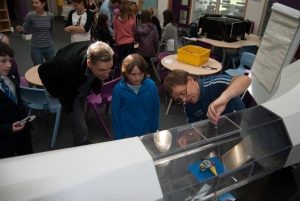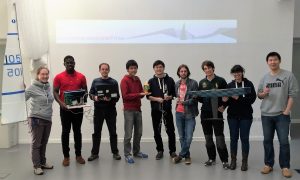
Founded in Autumn 2015, the Southampton Sailing Robot Team is well on track to sending the first Southampton Team to the World Robotic Sailing Championship 2016 in Portugal.
The competition consists of a set of challenges around sailing racing and data acquisition with autonomous vessels, moving towards persistent monitoring of our oceans.
VIDEO: https://youtu.be/KBZwdgfSnao
The students from Ship science, Engineering, Electronics and Computer Sciences, and the Faculty of Business, Law, and Art are currently crowd funding to supplement their competition cost and generate a starting budget for the next year.
A few more days to go, and £300 needed, maybe you are interested in donating to send them to Portugal – and receive rewards from stickers and postcards to joining for a Robot Boat Test day and getting a lesson in remote controlled sailing?
This year the Southampton will participate with a one metre boat in the Micro-Sailboat class, solving the challenges of sailing on a portable platform. Maybe you have already seen them testing their boat on campus, in the Southampton Common, the Itchen River, Eastleigh Lakes or the Solent. The boat regular gets attention, especially of passing by children who are fascinated by the small sailing boat.
Photos: in action
Sailing brings some special challenges: On the building side they have to make sure the electronics are waterproof, the boat doesn’t leak and that it is fast and reliable. On the software side, sailing brings some special routeing limitations: Whilst the next waypoint may be straight ahead, it can not be reached if the wind is coming from that direction! The sailing robot has to detect the wind direction on board and plan where it will tack to reach a waypoint located upwind.
Besides blogging about their endeavour, the Southampton Sailing Robot Team are making their work completely public. This means any sailing enthusiast or student working on a related project can easily get a sailing robot once they have a suitable sailing boat, based on their description of the electronic systems and the available firmware.
Monthly Archives: June 2016
BRIDGES to Europe
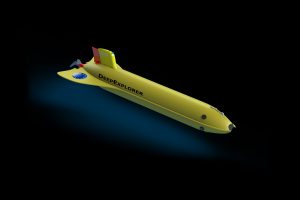
It is interesting to see that the FSI based project BRIDGES Bringing together Research and Industry for the Development of Glider Environmental Services has been featured as one of 24 case study projects across the EU by the Russell Group of top UK research Universities as part of its support for the UK to Remain in Europe.
Quoting from the Russell Group overview
The UK should remain at the heart of a modernised, competitive and outward-looking European Union to drive world-class research and innovation at our leading universities.
Research and innovation are global pursuits and are most effective when ideas and people are mobile across borders. The free movement of talent, the networks, collaborations, critical mass of research activity and funding that we gain from EU membership contributes to the competitiveness of our leading universities and the UK economy as a whole.
The Fluid Structure Interactions group consists of around 80 academics, researchers and graduate students drawn together from around the world. We come from many different countries, different backgrounds but are all focussed on the pursuit of academic research and educating the next generation of leading maritime engineers.
We collaborate extensively with colleagues throughout Europe, we educate many European students alongside UK nationals on our undergraduates and MSc programmes, and we welcome many European nationals as part of our staff and postgraduate students.
As Head of Group I just want to affirm my appreciation of the contributions of our multi-cultural and diverse research community in FSI to our on-going work and to repudiate the negative tone of the Referendum campaign. The last article by Jo Cox, MP sums up very well the very many benefits we collectively gain from an open and outward looking approach to the world.
Better hull performance
Dr Charles Erzan Badoe represented FSI at this year’s hull performance and insight conference (HullPIC), held in Castello di Pavone, Italy. The conference was aimed at recent developments in standardizing sensor technologies, merging of big data as well as applying uncertainty analysis, hydrodynamic modelling and extrapolation.
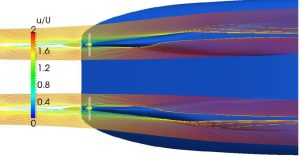
The conference drew together ship owners, operators and performance monitoring companies. The ISO-standard was also introduced, aimed at entering into a more robust performance based contract regarding measurement of changes in hull and propeller performance. The standard will also provide guidance when a maintenance such as hull cleaning, propeller polishing or repainting is needed.
The presentation by Dr Badoe focussed on the impact of hull-propeller –rudder interaction on ship powering assessment. The work investigated the different analysis methodologies that can be applied for computing hull-propeller-rudder interaction. The sensitivity into which the interaction between the propeller and rudder downstream of a skeg is resolved as well as varying the length of the upstream skeg were also discussed including techniques to consider in such computations. Throughout the work, the importance of hull-propeller-rudder interaction for propulsive power enhancement was demonstrated.
Battle of Jutland, the Navy's bloodiest day
For those fortunate to see the recent BBC programme presented by Dan Snow, that investigated the differences in Naval ship performance between the British and German vessels, there were some excellent footage of the Boldrewood Innovation Campus and was mentioned in a University press release.
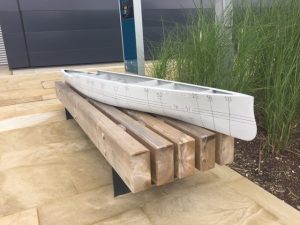
Dr Jon Downes and Prof Philip Wilson worked closely with the production company since the start of the year and are particularly grateful for the unacknowledged support of FSI/Ship Science Alumni Dr Pat Couser of Bentley Systems in the modelling of the sinking of HMS Queen Mary using the Maxsurf software suite (https://www.bentley.com/en/products/brands/maxsurf) as shown in the film, and also the fine work of Allan Thompson in the construction of the physical model of HMS Queen Mary. This model part funded by the Faculty of Engineering and Environment will be used as part of the Ship Science teaching programme.
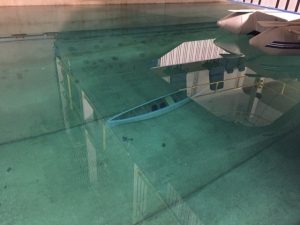
For those who watched the programme that seemed to confirm the long held view that it wasn’t the engineering of the British ships that was at fault, once the model took on sufficient damage to sink she went to the bottom so fast and so steeply that the one shot underwater video opportunity missed the descent and subsequent impressive impact!
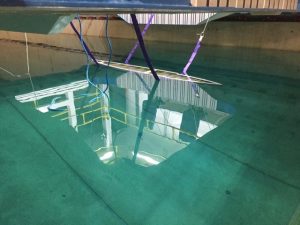
Poetry in motion
The University MULSER2014 funded Qualisys optical motion capture systems is now in operation in our new towing tank. It is also available for use at other locations including swimming pools as it consists of four underwater and eight above water cameras.
Dr Chris Phillips reports that at the end of March a small group of academics & researchers from both FSI and WUMTIA joined Phil from Qualysis to learn more. We were taken through the capabilities of the Qualysis system, illustrating applications in naval architecture as

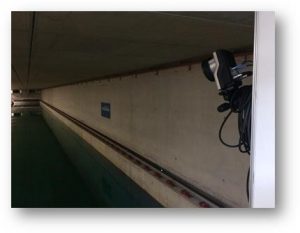

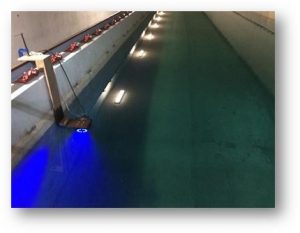
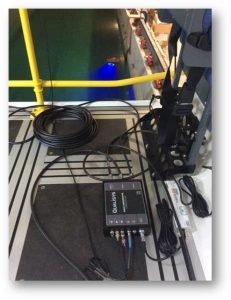 well as biomechanics. We were then taken through the crucial above and below water calibration phase to get the targeted ±0.4mm accuracy, before doing some simple trials ourselves.
well as biomechanics. We were then taken through the crucial above and below water calibration phase to get the targeted ±0.4mm accuracy, before doing some simple trials ourselves.
The possibilities this new capability of accurately tracking precise locations, above and or below water, has given us is extensive. With much of the system portable too, we’re not just limited to the towing tank, opening up other test sites and facilities such as in wind tunnels, swimming pool or motion capture platforms. There have been many research and commercial ideas already suggested, including; flexible rudders and hull forms in combination with DIC, sail performance, autopilot evaluations, UAV trials and performance sports analysis.
The first use of the system was for the SESS6067 Wave Energy lab were PhD student James Bowker developed two point absorbers and students tested their response in varying wave frequencies as well as their relative six degree of freedom motion. Once set up the system worked reliably throughout the two days of student testing with 50 students taking part in the laboratory.
Recently James has also used the system to capture the motion response of the wave powered autonomous surface vessel Fleur. The video shows Fleur making her way into the wave and then the motion captured of the markers on her deck.
Development of Energy Efficient Technologies
We are very pleased that Dr. Abdul Rahim, Managing Director, Europe and Africa, ClassNK, will deliver a seminar talk titled ” Development of Energy Efficient Technologies” on Thursday 9 June between 1200 and 1300 in Room 1125 in Building 176L.
Summary:
A preview of the practical R&D initiative of ClassNK with respect to the development of energy efficient technologies is given in the presentation. The R&D initiative is two fold: to support new regulations and to develop next generation technologies including fuel saving technologies. As for new regulations, some of the NOx reduction technologies including SCR and EGR are briefed. Some of the next generation technology development projects detailed include the hybrid tug boat, use of lithium batteries on board, fuel emulsion in reducing NOx emission, CFRP propeller, liquid hydrogen transportation, and maritime big data centre.
About the presenter:
Dr. M. Abdul Rahim FIMarEST FRINA,
Managing Director, Europe and Africa, ClassNK
Abdul Rahim started his career with Cochin Shipyard building Panamax bulk carriers and the first generation of double hull tankers. Later, after receiving masters and doctoral degrees in Ship Structure from Hiroshima University, Japan, he joined ClassNK in Tokyo, and worked for ClassNK ever since. After long stints in Japan and Singapore, he is currently the Managing Director, Europe and Africa of ClassNK, based in London.
He received the Singapore Joint RINA and IMarEST Branch Award in 2004 and the Stanley Gray Medal of the IMarEST in 2005 for his works on the development of Advanced Structural Rules which was the forerunner of IACS Common Structural Rules. He published more than 60 technical research papers mainly on ship structures.
Science of Ships on tour in Dorset
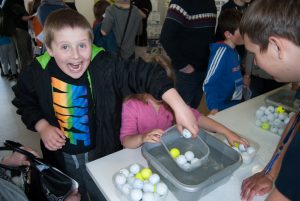 A team of ship science students from Team Hydra and FSI PhD students helped out at the very popular Purbeck School science fair on a recent Saturday afternoon. They provided a series of hands-on activities investigating the science of ships including the ‘golf ball challenge’ asking how many Golf balls can be placed in a floating container? They also ran a Wind Tunnel demonstration of the fluid dynamics of drag. In all 50 low drag Lego vehicles were tested to assess their energy efficiency at transporting a cargo of marbles. Great fun was had by all, with a total of 600 visitors.
A team of ship science students from Team Hydra and FSI PhD students helped out at the very popular Purbeck School science fair on a recent Saturday afternoon. They provided a series of hands-on activities investigating the science of ships including the ‘golf ball challenge’ asking how many Golf balls can be placed in a floating container? They also ran a Wind Tunnel demonstration of the fluid dynamics of drag. In all 50 low drag Lego vehicles were tested to assess their energy efficiency at transporting a cargo of marbles. Great fun was had by all, with a total of 600 visitors.
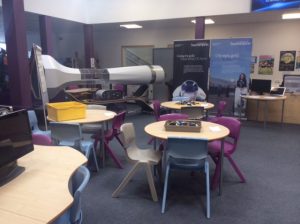
We now have a number of activities that we can supply or provide assistance with that helps promote Engineering and in particular of course maritime engineering opportunities to those who are not necessarily aware of the many exciting career opportunities. Please get in touch if you wish to discuss how we can help.
